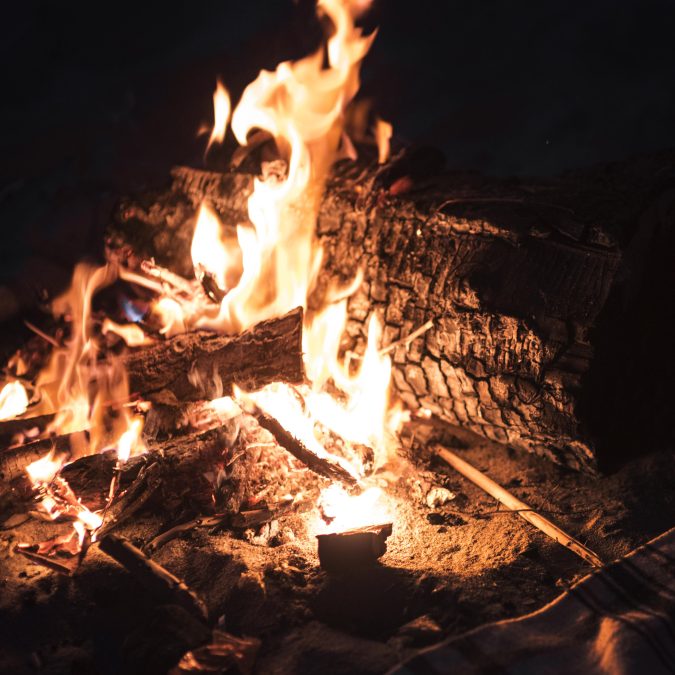
Embracing The Eternal Gift – The Observer December 2023
December 7, 2023
‘Tis The Season To De-Stress And Take Care Of Yourself
December 7, 2023Most of us can remember Christmases Past without suffering the ghostly terrors of a Charles Dickens novel. But can you remember Christmases Past all the way back to the 18th century? If your name begins with “le” or ends with “-aux” or “-on” or anything that sounds like “A” (like mine), if your name is spelled other than how it’s pronounced, or if it’s pronounced differently west of the Atchafalaya, or pronounced differently up- and down-the-bayou, then this story will help you remember Christmas all the way back in 1785.
About two decades before 1785, France had ceded the vast Louisiana territory to Spain, and thus Spain began to develop a resident population and economy that would check British expansion in North America. The Spanish territorial government in Louisiana heard the particular plight of Acadian exiles who had been captured on Île Saint-Jean in 1758 and then deported to villages along the northwest coast of France. In France for nearly 30 years, these Acadians had hoped for repatriation into the mother country, but instead they were settled on unsuitable land in an unsuitable economy. Spain offered them settlement in Louisiana where other exiled Acadian families had already been settled.
Beginning in May 1785, these families boarded a series of seven frigate ships and departed from ports in coastal France bound for Louisiana. Eventually, nearly 1600 landed in New Orleans and were offered grants of fertile farmland along south Louisiana waterways. Some chose settlement around modern-day cities of Lafayette and Baton Rouge, where earlier exiles had been settled since the 1760s. But nearly half of all 1785 Acadians chose to settle along the upper reaches of Bayou Lafourche and Bayou Terrebonne. The last of the seven ships landed in New Orleans on 17 December, just shy of Christmas. Thus, after hiding on Île Saint-Jean to evade the British, after being captured and deported across the Atlantic to suffer in the hands of post-war France for three decades, and after returning back across the ocean to Louisiana, they were all reunited in Louisiana by Christmas 1785. These settlers are the ancestors of PoV Country Cajuns.
Between May and December 1785, Acadian families who settled along Bayous Lafourche and Terrebonne had kept busy by clearing land, building homes, planting seeds, and fattening the livestock provided them by the Spanish. Of course, being devout Catholics, they most certainly celebrated Christmas. But a church and a permanent priest would not arrive to Plattenville for eight years and to Thibodaux for 35 years. A church in Donaldsonville was 36 miles away. So, how does an Acadian settler on the bayou celebrate the Christmas in 1785?
Early Acadian society was built on the extended community—for clearing, for planting, for harvesting, and even for the upbringing of children. So no doubt there would be one or more large Christmas gathering for families along the bayou. Locations may have been announced by a bonfire of timber from the 40-arpent woods built atop the natural levee of the bayou. There, an elder or itinerant religious would have led a devotional ceremony, likely at midnight to represent the midnight mass Acadians were accustomed to. After prayers, the Acadians would have sung historical carols in French, likely in their colloquial dialect. Then came a big dinner—a réveillon—where winter harvest like cabbage, turnips, carrots, and onions would be turned into meals. Maybe a “boucherie” of a hog or of wild game would be shared, along with baked goods cooked in mud ovens. The bayous would have provided the Acadians with fish— freshwater fish like mullet and catfish and bass—and some would be “boucané” or salted and given as gifts. Gifts for children may have included a hand-carved animal figurine or a fishing pole fashioned from a twig and some twine. Sometimes, children were given a freshly-baked “naulet”—a large biscuit shaped like a little man— by their godparents.
The group of 1785 Acadians who settled on Bayous Lafourche and Terrebonne were the single largest re-settlement of Acadians in world history, as well as the final mass re-settlement of Acadians in America. Very little is known about their Christmas traditions before the Exile in 1755. Fortunately, however, settlers tend to carry their traditions with them. We can we can imagine what the 1785 Acadians did for Christmas because that’s what their descendants in PoV Country still do today–like midnight mass, big meals, maybe a bonfire (but not this year!), and certainly extended family—and like the breads my grandmother would bake for me that were shaped like a little man. (Where else would she have learned that besides the tradition?) Traditions not only keep you connected to the past but they also keep the ghosts of your Christmases Past benevolent ones. So, now you can relax with your ghost and enjoy savoring your grandmother’s hot bread, avec un peu de beurre et de café, comme au bon vieux temps.






